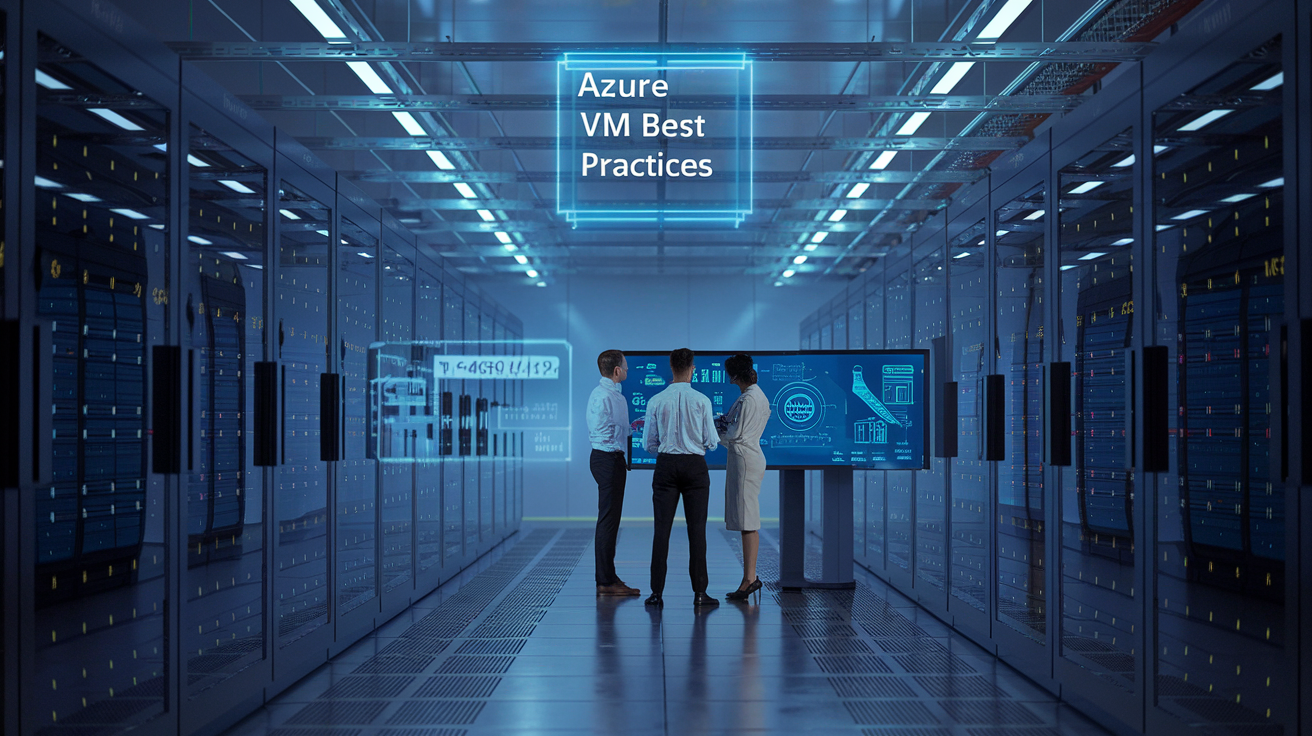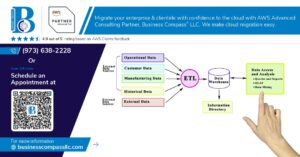Are you struggling to harness the full potential of Azure Virtual Machines? 🤔 In today’s fast-paced cloud computing landscape, deploying and managing VMs efficiently can be the difference between success and failure. Many organizations find themselves grappling with performance issues, security concerns, and spiraling costs when it comes to their Azure VM implementations.
But fear not! 💪 This comprehensive guide will walk you through the best practices for implementing Azure Virtual Machines, ensuring you’re equipped to overcome these challenges. From planning your deployment to optimizing costs, we’ll cover everything you need to know to leverage Azure VMs like a pro.
In this blog post, we’ll delve into seven crucial aspects of Azure VM implementation: planning your deployment, optimizing performance, ensuring high availability and scalability, securing your VMs, effective monitoring and management, cost optimization strategies, and streamlining deployment processes. By the end, you’ll have a roadmap to transform your Azure VM infrastructure into a powerhouse of efficiency and reliability. Let’s dive in!
Planning Your Azure VM Deployment

A. Assessing your workload requirements
Before deploying Azure Virtual Machines, it’s crucial to thoroughly assess your workload requirements. This step forms the foundation for a successful VM implementation. Consider the following factors:
- Performance needs
- Scalability requirements
- Availability expectations
- Data storage and processing demands
- Network traffic patterns
Use this checklist to evaluate your workload:
- CPU usage patterns
- Memory requirements
- Storage IOPS and throughput
- Network bandwidth
- Operating system preferences
- Compliance and regulatory requirements
B. Choosing the right VM size and series
Once you’ve assessed your workload, selecting the appropriate VM size and series becomes easier. Azure offers a wide range of VM options to cater to various needs:
| VM Series | Best For | Key Features |
|---|---|---|
| B-series | Dev/Test, low traffic web servers | Burstable, cost-effective |
| D-series | Enterprise apps, relational databases | Balanced CPU-to-memory ratio |
| F-series | Gaming servers, web servers | High CPU-to-memory ratio |
| E-series | Memory-intensive workloads | High memory-to-CPU ratio |
| G-series | Large databases, big data processing | High memory and local SSD storage |
C. Determining storage needs
Proper storage planning is essential for optimal VM performance. Consider these Azure storage options:
- Standard HDD: For dev/test and non-critical workloads
- Standard SSD: For production and performance-sensitive workloads
- Premium SSD: For I/O-intensive applications and critical workloads
- Ultra Disk: For extremely high I/O requirements
D. Estimating costs and budgeting
To accurately estimate costs and budget for your Azure VM deployment:
- Use the Azure Pricing Calculator
- Consider reserved instances for long-term commitments
- Evaluate pay-as-you-go vs. prepaid options
- Factor in additional costs like networking and storage
By carefully planning your Azure VM deployment, you’ll set a strong foundation for success. Next, we’ll explore how to optimize VM performance to ensure your workloads run efficiently.
Optimizing VM Performance

A. Selecting the appropriate OS
When optimizing VM performance, choosing the right operating system is crucial. Consider the following factors:
- Application compatibility
- Performance requirements
- Licensing costs
- Support and maintenance
Here’s a comparison of popular OS options for Azure VMs:
| OS | Pros | Cons |
|---|---|---|
| Windows Server | – Excellent for .NET applications<br>- Strong security features | – Higher licensing costs<br>- Resource-intensive |
| Ubuntu | – Lightweight and fast<br>- Large community support | – Steeper learning curve for Windows users |
| CentOS | – Stable and reliable<br>- Free to use | – Limited official support |
B. Configuring VM settings for peak performance
Optimize your VM’s performance by fine-tuning these settings:
- Choose the right VM size based on workload requirements
- Enable boot diagnostics for faster troubleshooting
- Use managed disks for improved reliability and performance
- Configure appropriate network settings, including load balancing
C. Implementing Azure premium storage
Azure premium storage offers significant performance benefits:
- Higher IOPS and lower latency
- Ideal for I/O-intensive workloads
- Supports disk caching for improved read performance
D. Leveraging Azure Accelerated Networking
Accelerated Networking can dramatically improve network performance:
- Reduces latency by up to 10x
- Decreases jitter and CPU utilization
- Supports speeds up to 25 Gbps
By implementing these optimization techniques, you can significantly enhance your Azure VM’s performance. Next, we’ll explore strategies for ensuring high availability and scalability in your Azure VM deployment.
Ensuring High Availability and Scalability

Implementing Azure Availability Sets
Azure Availability Sets are a crucial component in ensuring high availability for your virtual machines. They distribute your VMs across multiple fault domains and update domains, reducing the risk of downtime due to hardware failures or planned maintenance.
Key benefits of Azure Availability Sets:
- Fault isolation
- Improved application resilience
- Increased uptime
| Feature | Description |
|---|---|
| Fault Domains | Physical divisions of the datacenter |
| Update Domains | Logical divisions for maintenance |
Utilizing Azure Availability Zones
Azure Availability Zones take high availability to the next level by providing physically separate locations within an Azure region. This approach offers even greater protection against datacenter-wide failures.
Advantages of Azure Availability Zones:
- Enhanced disaster recovery
- Improved geo-redundancy
- Lower latency for distributed applications
Setting up load balancing
Load balancing is essential for distributing traffic across multiple VM instances, ensuring optimal resource utilization and improved application performance.
Load balancing options in Azure:
- Azure Load Balancer
- Application Gateway
- Traffic Manager
Configuring auto-scaling
Auto-scaling allows your application to dynamically adjust resources based on demand, ensuring optimal performance during peak times and cost-efficiency during low-usage periods.
Key considerations for auto-scaling:
- Define appropriate scaling metrics
- Set appropriate minimum and maximum instance counts
- Configure scale-out and scale-in rules
With these high availability and scalability features in place, your Azure VMs will be well-equipped to handle varying workloads and potential failures. Next, we’ll explore crucial security measures to protect your Azure VMs from potential threats and unauthorized access.
Securing Your Azure VMs

Implementing Network Security Groups
Network Security Groups (NSGs) are a crucial component in securing your Azure VMs. They act as a virtual firewall, controlling inbound and outbound traffic to network interfaces, subnets, and VMs.
Key features of NSGs:
- Stateful packet filtering
- 5-tuple rule configuration (source IP, source port, destination IP, destination port, protocol)
- Integration with Azure Security Center for advanced threat protection
Here’s a comparison of default vs. custom NSG rules:
| Rule Type | Advantages | Limitations |
|---|---|---|
| Default | Pre-configured, Easy to use | Limited customization |
| Custom | Highly flexible, Tailored security | Requires more setup time |
Enabling Azure Disk Encryption
Azure Disk Encryption provides volume encryption for OS and data disks used by Azure VMs. It integrates with Azure Key Vault, ensuring secure key management.
Key benefits:
- Protects data at rest
- Supports both Windows and Linux VMs
- Uses industry-standard BitLocker (Windows) and DM-Crypt (Linux)
Applying security best practices
To enhance your Azure VM security:
- Use Just-In-Time (JIT) VM access
- Implement principle of least privilege
- Keep OS and applications updated
- Use strong authentication methods
- Enable Azure AD login for VMs
Utilizing Azure Security Center
Azure Security Center offers unified security management and advanced threat protection across hybrid cloud workloads. It provides:
- Continuous security assessment
- Actionable recommendations
- Advanced cloud defenses
By implementing these security measures, you’ll significantly enhance the protection of your Azure VMs against potential threats and vulnerabilities. Next, we’ll explore effective strategies for monitoring and managing your Azure VMs to ensure optimal performance and security.
Monitoring and Managing Azure VMs

Setting up Azure Monitor
Azure Monitor is a crucial tool for maintaining the health and performance of your Azure Virtual Machines. It provides comprehensive monitoring capabilities, allowing you to collect and analyze telemetry data from your VMs.
To set up Azure Monitor:
- Enable diagnostics settings
- Configure metrics collection
- Set up log analytics
- Create custom dashboards
Here’s a comparison of key Azure Monitor features:
| Feature | Description | Benefits |
|---|---|---|
| Metrics | Real-time performance data | Quick insights into VM health |
| Logs | Detailed event and performance logs | In-depth troubleshooting |
| Alerts | Notifications based on predefined conditions | Proactive issue management |
| Dashboards | Customizable visualization | Easy monitoring at a glance |
Implementing Azure Automation
Azure Automation streamlines VM management tasks, reducing manual effort and improving efficiency. Key benefits include:
- Scheduled task execution
- Configuration management
- Update management
To implement Azure Automation:
- Create an Automation account
- Develop runbooks for common tasks
- Schedule runbook execution
- Integrate with Azure Monitor for automated responses
Using Azure Backup for data protection
Azure Backup ensures your VM data is protected against loss or corruption. It offers:
- File and folder backups
- Application-consistent backups
- Long-term retention options
To set up Azure Backup:
- Create a Recovery Services vault
- Configure backup policies
- Enable backup for your VMs
- Monitor backup status and perform restores as needed
Leveraging Azure Site Recovery for disaster recovery
Azure Site Recovery provides robust disaster recovery capabilities for your VMs. It allows you to:
- Replicate VMs to a secondary region
- Perform failover and failback operations
- Test your disaster recovery plan without disrupting production
Now that we’ve covered monitoring and management, let’s explore cost optimization strategies for your Azure VMs.
Cost Optimization Strategies

A. Utilizing Azure Reserved VM Instances
Azure Reserved VM Instances (RIs) offer a cost-effective way to optimize your Azure spending. By committing to a one or three-year term, you can save up to 72% compared to pay-as-you-go pricing. Here’s how to make the most of RIs:
- Analyze your VM usage patterns
- Choose the right VM size and region
- Select the appropriate term length
- Consider combining RIs with Azure Hybrid Benefit
| Reservation Term | Potential Savings |
|---|---|
| 1-year | Up to 40-45% |
| 3-year | Up to 60-72% |
B. Implementing proper VM shutdown schedules
Implementing VM shutdown schedules can significantly reduce costs by ensuring VMs are only running when needed. Consider the following best practices:
- Use Azure Automation to create custom shutdown schedules
- Implement start/stop schedules based on workload patterns
- Configure auto-shutdown for dev/test environments
- Utilize Azure Policy to enforce shutdown schedules
C. Rightsizing VMs based on usage patterns
Rightsizing involves selecting the most appropriate VM size for your workload. This process can lead to substantial cost savings:
- Monitor VM performance metrics
- Identify underutilized resources
- Adjust VM sizes accordingly
- Consider using Azure Monitor autoscale
D. Leveraging Azure Hybrid Benefit
Azure Hybrid Benefit allows you to use your existing on-premises Windows Server and SQL Server licenses in Azure, potentially reducing costs by up to 40%. To maximize savings:
- Assess your current license inventory
- Apply Azure Hybrid Benefit to eligible VMs
- Combine with Reserved Instances for additional savings
- Regularly review and optimize your licensing strategy
By implementing these cost optimization strategies, you can significantly reduce your Azure VM expenses while maintaining optimal performance. Next, we’ll explore how to streamline your VM deployment process for increased efficiency and consistency.
Streamlining VM Deployment

Creating custom VM images
Custom VM images are a powerful tool for streamlining Azure VM deployment. They allow you to create pre-configured, standardized images that can be quickly deployed across your organization. Here’s a comparison of custom images vs. marketplace images:
| Feature | Custom Images | Marketplace Images |
|---|---|---|
| Customization | High | Limited |
| Deployment Speed | Fast | Moderate |
| Consistency | Guaranteed | Varies |
| Maintenance | Required | Managed by provider |
To create an effective custom image:
- Start with a base image
- Install necessary software and configurations
- Generalize the VM
- Capture the image
Utilizing Azure Resource Manager templates
Azure Resource Manager (ARM) templates provide a declarative way to define and deploy Azure resources. They offer several benefits for VM deployment:
- Consistency across environments
- Version control for infrastructure
- Modular and reusable designs
- Parameterization for flexibility
Implementing Infrastructure as Code
Infrastructure as Code (IaC) takes VM deployment to the next level by treating infrastructure provisioning as a software development process. Popular IaC tools for Azure include:
- Terraform
- Ansible
- Chef
- Puppet
These tools enable version-controlled, repeatable, and automated infrastructure deployments.
Leveraging Azure DevOps for CI/CD
Azure DevOps provides a comprehensive set of tools for implementing Continuous Integration and Continuous Deployment (CI/CD) pipelines for your VM deployments. Key features include:
- Source control integration
- Automated testing
- Release management
- Environment monitoring
By incorporating these practices, you can significantly streamline your Azure VM deployment process, reducing errors and improving efficiency.

Azure Virtual Machines offer powerful capabilities for businesses looking to leverage cloud computing. By following best practices in planning, optimization, security, and management, organizations can maximize the benefits of their Azure VM deployments. Prioritizing performance, high availability, and scalability ensures that your infrastructure can meet evolving business needs while maintaining robust security measures.
Implementing cost optimization strategies and streamlining deployment processes can significantly enhance the efficiency and cost-effectiveness of your Azure VM infrastructure. As you embark on your Azure VM journey, remember that continuous monitoring and proactive management are key to maintaining peak performance and security. By adhering to these best practices, you’ll be well-equipped to harness the full potential of Azure Virtual Machines and drive your organization’s digital transformation forward.




















